Ah, the frustration! You purchase milk, go home, and the next morning when you make yourself a cup of tea, and – the milk immediately curdles when it comes in contact with the hot water.
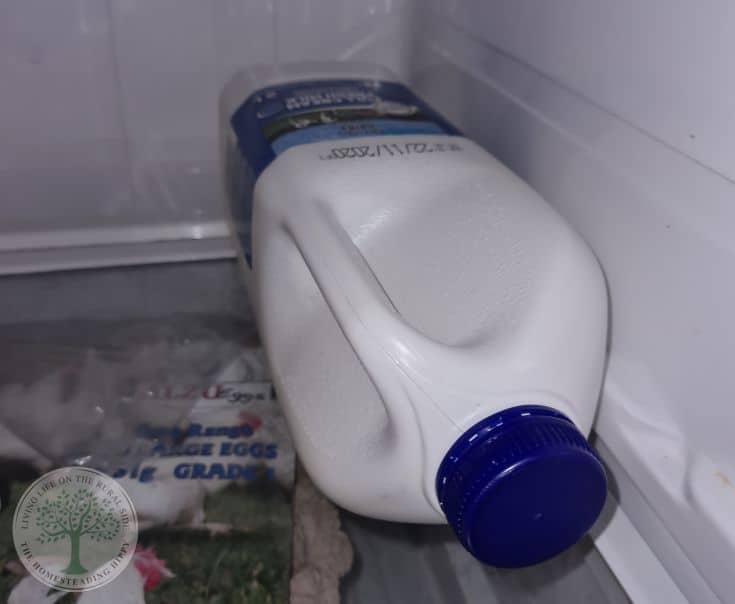
At least if that happens it gives you a little warning. A cup of tea that looks perfectly fine can be a pretty nasty surprise when you taste that foul, sour milk.
If you live in a remote area, you probably want milk that can last for months…
Whether you opt to use long-life milk or powdered milk, there are ways to keep your milk fresher for longer. I live where milk is freely available any time, day or night, yet I always have a six-pack of long-life milk in my pantry, just in case we find our fridge milk is spoiled.
If you have your own dairy cows, there are things you can do to ensure that your fresh milk lasts longer in your fridge and or deep freeze.
Making sure that your milk is fresh when you buy it and keeping it fresh for longer does not need to be a big ordeal. There are plenty of things you can do to keep your milk fresher for longer.
When You Shop, Leave Your Milk for Last
This is such a simple way to keep your milk fresh. Do all your shopping while the milk awaits in the store’s refrigerator and pick up the milk last on your way to the cash register.
You want to keep milk in the store’s refrigerator every moment you can.
Check Expiry Dates When You Purchase Milk
Probably the most important aspect of keeping milk fresher for longer is the expiry date on the bottle. Shops normally put the most recently unpacked milk at the back of the fridge to ensure the older milk is sold first.
The Use By Date Will Tell You By When You Will Need To Use the Milk, If You Buy Milk In Bottles This Is Important Because the Milk is Processed Differently
Check the expiry date, and look for the date furthest from the day you are purchasing it. I have no problem with pushing older stock aside to reach all the way in to grab the freshest milk.
The other benefit of reaching for the milk in the back is that the fridge is colder in the back, which means milk stored there will be colder and therefore last longer.
Store Your Milk on the Shelf Inside the Refrigerator
One of the most common mistakes we make is we store our milk in the door of our refrigerators’ doors. We do this because it feels more convenient.
But the door is the warmest part of the fridge because every time we open the fridge the heat from the kitchen immediately warms everything in the door.
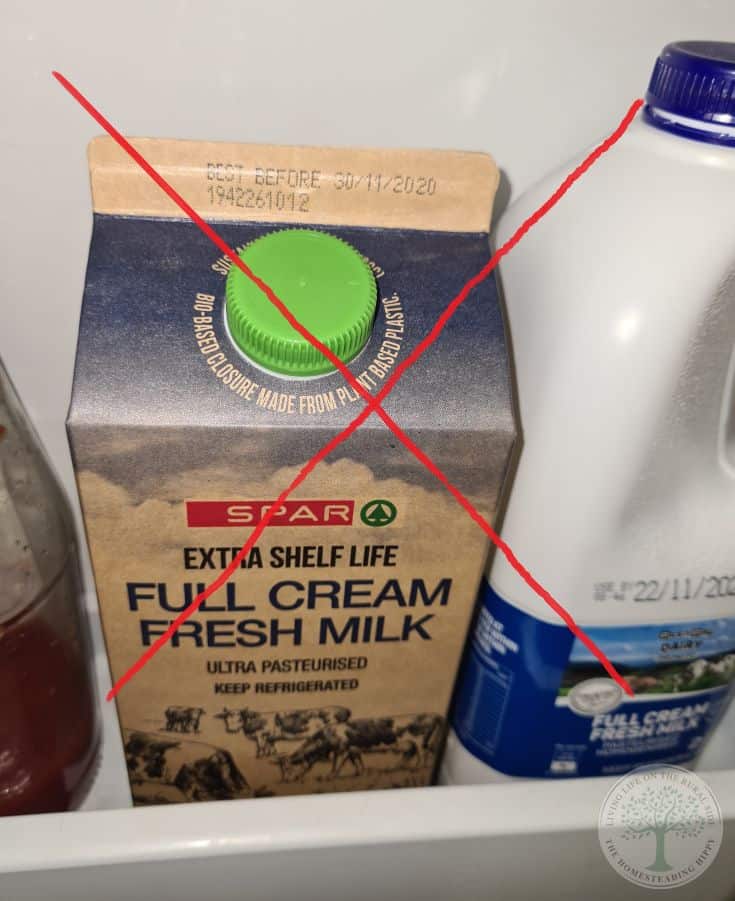
All dairy products should be stored on a lower shelf – remember hot air rises – or in a drawer in the fridge where it will stay cold when you open the door. Storing it in the drawer is optimal because it will only really be exposed to warm air if you open the drawer to retrieve the milk.
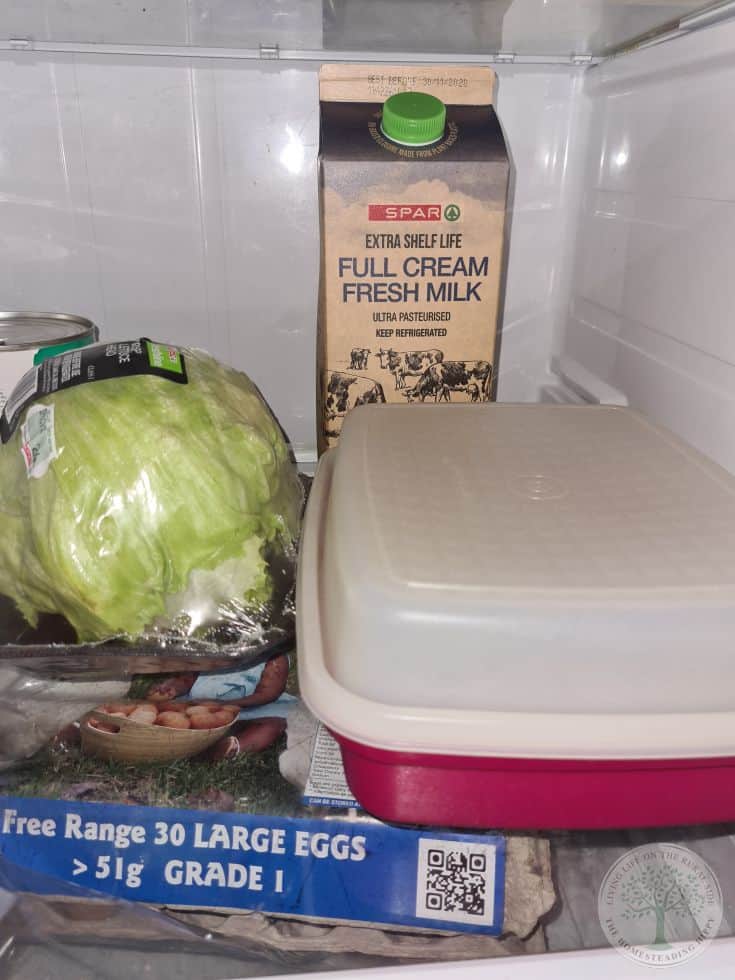
Storing it at the back of the fridge will also keep it colder. Place new milk at the back so that you can follow the store’s practice of using older milk first.
Keep Your Milk Cold
When you purchase milk, the first thing you should do when you get home is you should put the milk in the fridge.
Exposure to warm air means bacteria in the milk will cause it to spoil quicker. Take out only what you need and leave the rest in the fridge.
I keep my refrigerator very cold, almost to where liquids want to freeze. The optimal temperature for keeping milk fresh is between 32°F and 37°F (0 C to 3 C). This means the temperature where the milk is stored inside the fridge. Anything close to 40°F (5 C) is not good enough. Your milk will not stay fresh for long.
Put Milk Away Immediately When You Use It
I am sure every parent reading this is going to groan! “Kids! Put the milk away!” Whether you are making hot chocolate or pouring milk on cereal, the less time out of the fridge the better.
Teach your kids from a young age to put the milk away immediately. Most people buy milk in plastic bottles or in cartons. That means little helpers will not break glass when they put it away.
Little kids love to help with anything you are doing. It instills a sense of purpose, self-confidence, and achievement in them when you include them by giving them tasks to carry out. If they do it when they are little, it will become second nature to them to put the milk away when they are older.
Close the Refrigerator Door
We all do this, we are hungry, but we do not know what we feel like eating. So, we open the fridge and stare vacantly at the contents while we decide what to eat.
Get in the habit of opening the fridge with purpose. Get what you need and then close the door. Keeping the door open lets cold air escape and lets hot air into the fridge.
Freeze Milk You Are Not Going to Use Immediately
Most homesteaders do not live in towns where they can just pop into the shops to make purchases daily. Most of us would prefer to never go into town at all. That is why we homestead – to be self-sufficient.
Well, whether you have your own cows for milk, or you have to purchase milk from a store, freezing your milk is the best way to ensure it stays as fresh as the day you bought it.
You may need to remove a little bit of milk from the bottle if you buy in bottles because milk does expand. However, milk in packets and milk in cartons are properly sealed so that there is no mess when the milk expands.
Also, with whole milk bought from a dairy the quality of the milk does seem to have an effect. I have found that store-bought milk expands and pours out of the bottle while farm-bought milk – dairy – does not expand to the point where it leaks.
I am not sure why this happens though. I suspect it has something to do with the cream or fat content of the milk.
When your milk is starting to run low or you have a gallon left, just place the frozen milk in the fridge to thaw it overnight.
Do not leave it on the counter to thaw. Even in its frozen state, it is susceptible to warm air. As the milk thaws the bacteria can immediately start to break the milk down.
Because milk sometimes separates from cream when it has been frozen, you will need to give it a good shake to restore the cream to the milk. If it has separated a lot, just beat it with the eggbeater, and it will be as good as new.
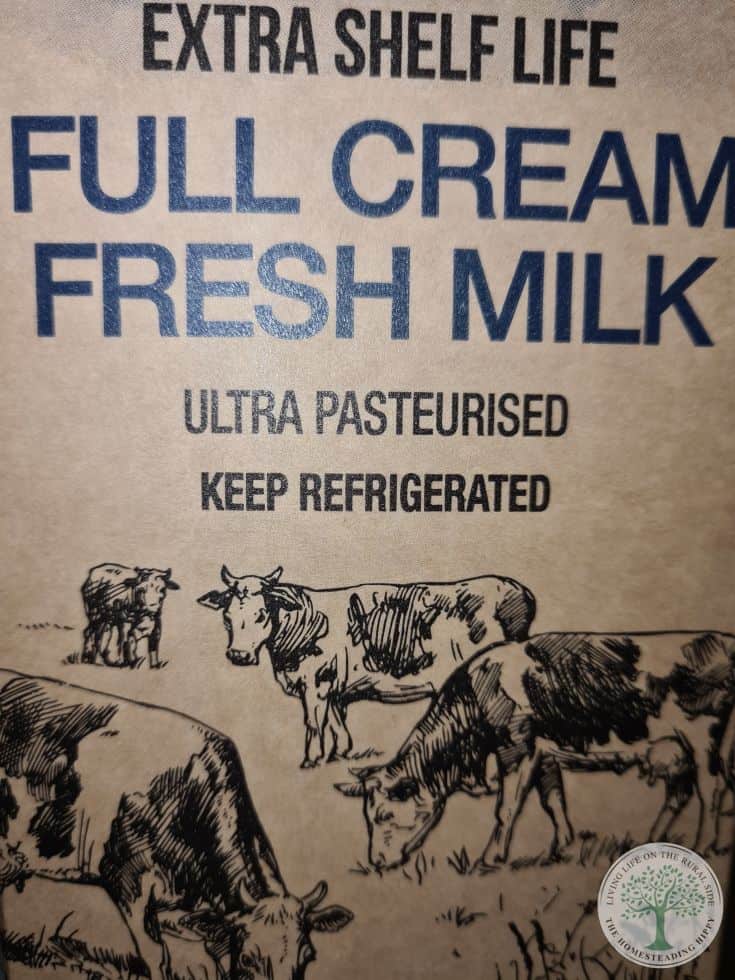
Buy Organic Milk
I know many people have jumped on the organic train already. As homesteaders, the two often go hand in hand.
Organic milk is pasteurized differently and therefore lasts significantly longer than store-bought – regular milk. The milk you buy in the shops as pasteurized milk is heated to 160° F / 71° C for 15 seconds (HTST) to kill off the bacteria in it that can make people sick.
Organic milk is heated to 280° / 137° C for just 2 seconds (UHT).
This pasteurization process is effective enough to kill off the nasties while maintaining the nutrients and fat (it does destroy some but not all of the vitamin B and folate) content. It also destroys all the microorganisms and spores that make milk spoil.
If you look at cartons of long-life milk you will see a marking that says UHT. This refers to the fact that it has been pasteurized using Ultrahigh Temperature.
This milk can last for months, and the taste is divine. Because some of the sugars in the milk caramelize during the pasteurization process it is a little sweeter than conventional fresh milk.

All organic milk is pasteurized using the UHT process. Remember that with UHT pasteurized milk, once it is open, it must be refrigerated.
Don’t Return Unused Milk to the Bottle
If you have visitors and you pour milk into a jug for teatime, and the milk is not all used, do not pour the leftover milk back into the bottle you poured it from. During the time it sat out in the living room, it was exposed to warm air. This will make the milk deteriorate quickly.
If you pour it back, the bacteria that has begun to grow because of the exposure to heat will be transferred into the bottle of milk and will contaminate the whole bottle causing it to go sour faster.
You don’t need to throw that milk out. Leave it in the jug in the fridge, and use that milk first while it is still fresh.
Making and Storing Powdered Milk
If you have a lot of milk and you know you won’t be able to use it all before it spoils, but you don’t have space in your deep freeze to freeze it, the simplest solution is right there in your kitchen.
You can easily make your own powdered milk at home. Powdered milk is just milk that has had all the water dehydrated out of it.
There are plenty of ways to dehydrate your milk, whether you choose to use a dehydrator, a pot on the stove, or your oven. I do mine in a deep glass bowl in the oven.
- Put the milk in the deep bowl in the oven.
- Set the oven to its lowest heat.
- Leave the door slightly open.
- Stir the milk every 15 minutes until it takes on a flakey look.
- Remove it from the oven.
- Spread the flakes over baking paper.
- Return it to the oven.
- When all the moisture is gone, put the flakes through your food processor until it is properly powdered.
It is important to always store homemade or store-bought milk powder in an air- and moisture-proof container. I vacuum-packed mine to ensure it lasts longer.
To rehydrate your milk, simply add 2-3 tablespoons of powdered milk to a glass of water.
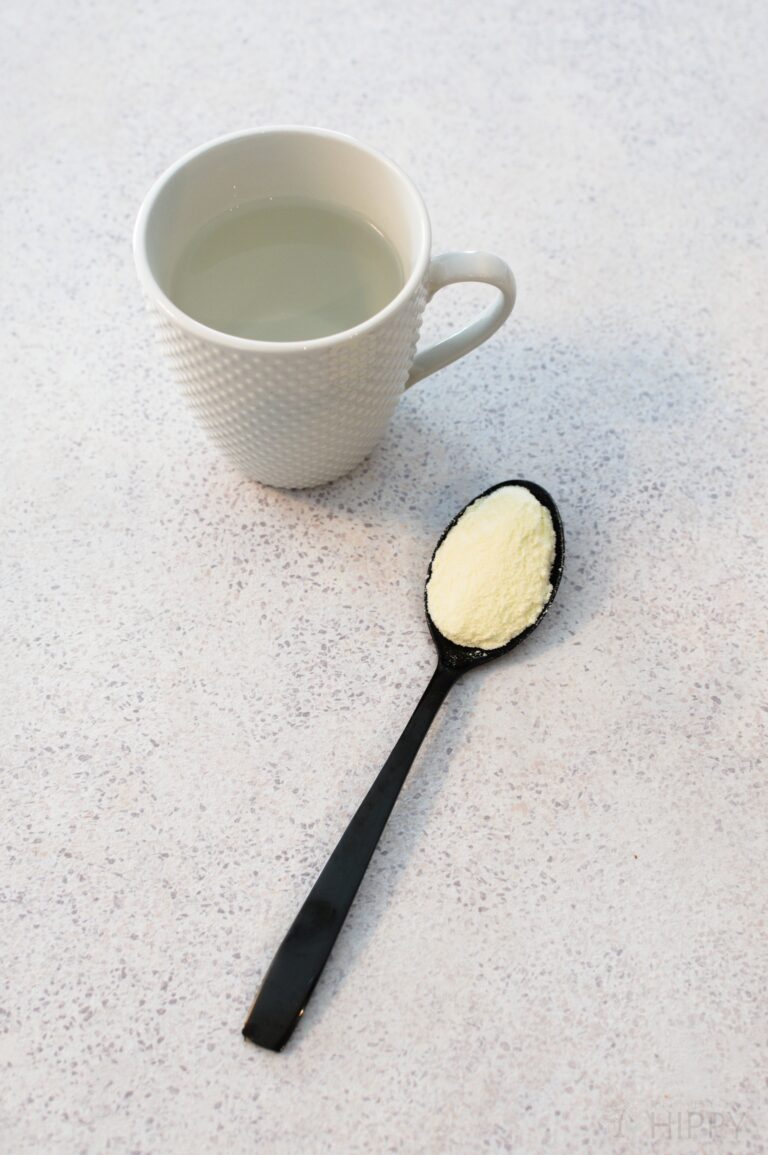
Keep powdered milk in a cool, dark place. Just like normal milk, powdered milk can also spoil. Store it in an airtight container in a cool, dark place. You should always use it within a month of opening it.
Reconstituted milk should be stored in an airtight bottle in the fridge, and it should be used within three days of mixing.
Keep Non-dairy Milk in the Refrigerator
Soy milk is also put through a pasteurization process and comes as refrigerated or unrefrigerated. Refrigerated soy milk must be stored in the fridge and used within 7 to 10 days.
Unrefrigerated, long-life soy milk comes in cartons, just like other long-life milk, and just as with any other milk, it should be stored in the fridge once opened, and used within 7 – 10 days after opening.
Almond milk, rice milk, and oat milk should also be refrigerated in an airtight container to keep them fresh and tasty.
I recommend that you filter all plant-based milk through a clean kitchen cloth or muslin cloth twice to remove any plant residue. This will also keep it fresher for longer. It should last 5 to 8 days in the fridge if it is filtered.
Conclusion
Whether you use cows’ milk, goats’ milk, or soy milk, all are susceptible to the bacteria and spores that make them go off.
The milk that lasts the absolute longest is organic milk – whether fresh or long life. It also has the best taste – in my opinion, anyway.
Milk has such a high nutritional base that researchers have tested and proven that a human adult can live off of milk alone. I know this because I am not a friend of food. I am not anorexic or bulimic or any kind of ‘ic’, I just get bored easily when eating. I drink a lot of milk and always have.
I have seen a dietician, and she put together a diet for me so that I am still forced to eat a little bit of food daily, but my main source of nutrition is 2 liters of milk every day, making me proof that an adult can live off of milk alone.
With organic milk’s heavenly taste, who wouldn’t want to drink milk every day? I hope I’ve given you the tools to keep your milk fresher for longer. For now, a glass of milk has my name on it, CHEERS!
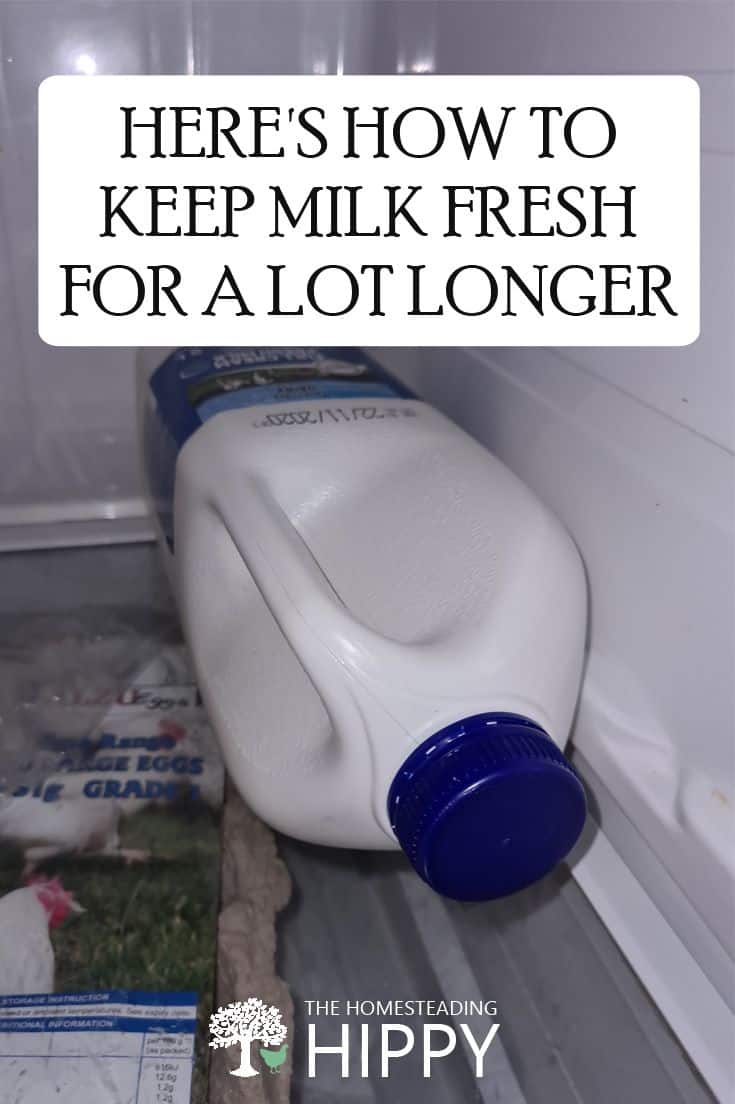

Di-Anne Devenish Seebregts was raised in an environment where daily life consisted of hiking, environmental conservation, growing fruit and vegetables, and raising poultry for meat and eggs.
She combined her passion for the writing word with her love of the pride that comes with not relying on others. She raised three children (who are now adults) to value the environment, and understand the value of being self-sufficient.
Find out more about Di-Anne on our About Us page.

I just learned something today. Thank you for telling people about milk. I, for one did not know that about organic milk. Now that I do, I’m going to start using it. I throw out more milk than I care to admit and have been storing it incorrectly. See, you can teach an old dog new tricks.